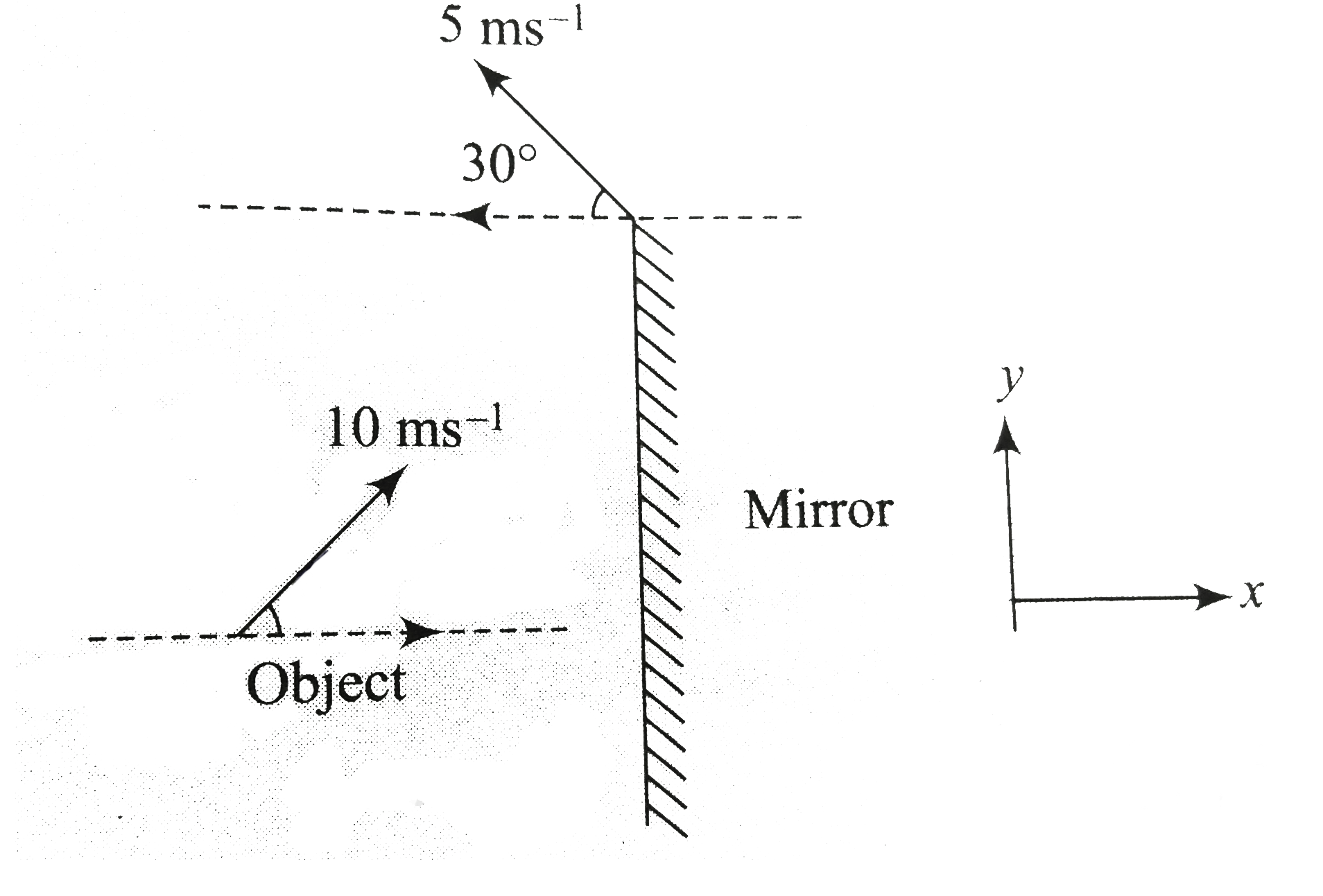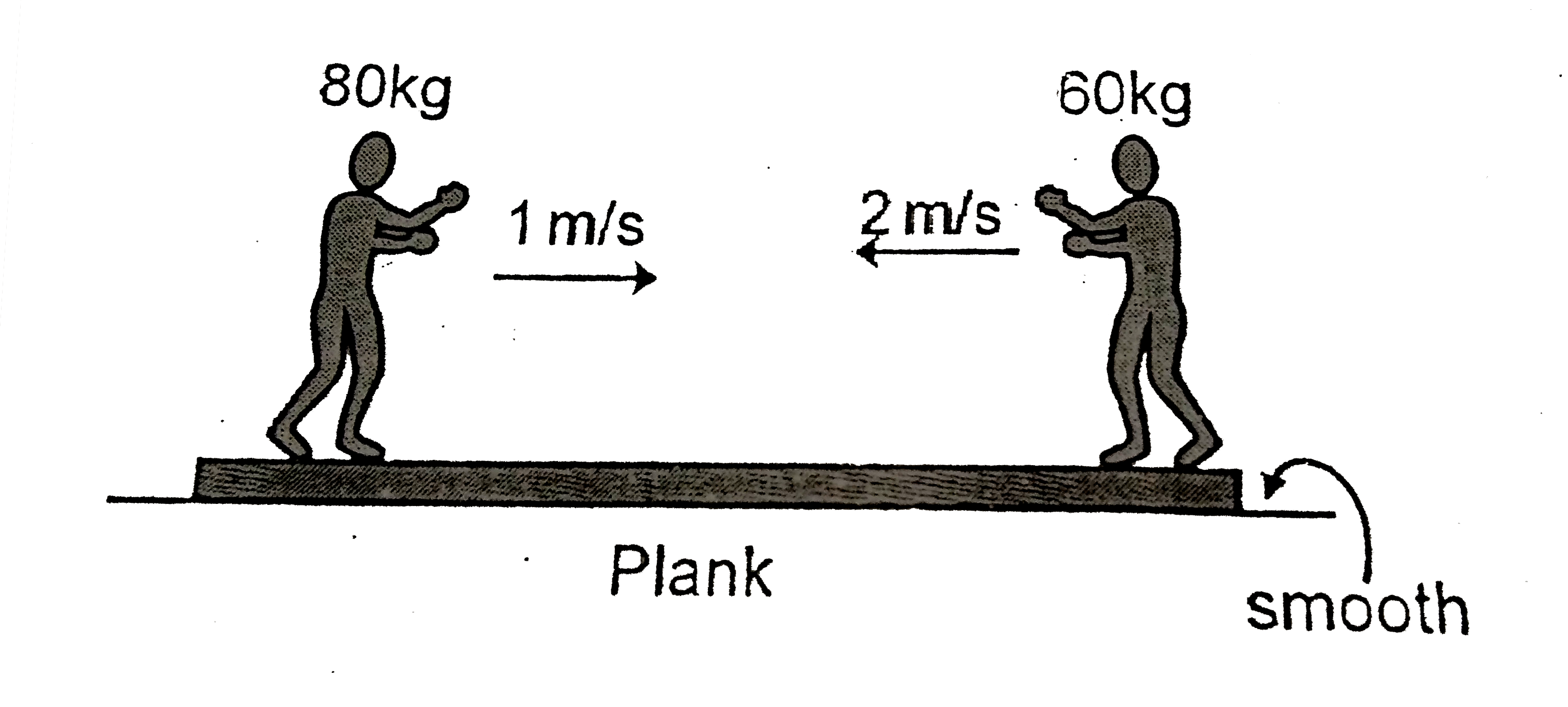Find the velocity of the image when the object and mirror both are moving towards each other with velocities 2 and 3ms−1. How are they moving?
To find the velocity of the image when the object and the mirror are moving towards each other, we can follow these steps:
Step 1: Define the velocities
Let:
- Velocity of the object (v_o) = +2 m/s (moving towards the mirror)
- Velocity of the mirror (v_m) = -3 m/s (moving towards the object)
Step 2: Determine the relative velocity of the object with respect to the mirror
The relative velocity of the object with respect to the mirror (v_{o/m}) can be calculated using the formula:
vo/m=vo−vm
Substituting the values:
vo/m=2−(−3)
vo/m=2+3=5 m/s
Step 3: Determine the velocity of the image with respect to the mirror
In the case of a plane mirror, the image moves with the same speed as the object but in the opposite direction. Therefore, the velocity of the image with respect to the mirror (v_{i/m}) is:
vi/m=−vo/m
vi/m=−5 m/s
Step 4: Calculate the actual velocity of the image
Now, we can find the actual velocity of the image (v_i) using the formula:
vi=vi/m+vm
Substituting the values:
vi=−5+(−3)
vi=−5−3=−8 m/s
Conclusion
The velocity of the image is -8 m/s, indicating that it is moving towards the object.
---
Let:
- Velocity of the object (v_o) = +2 m/s (moving towards the mirror)
- Velocity of the mirror (v_m) = -3 m/s (moving towards the object)
The relative velocity of the object with respect to the mirror (v_{o/m}) can be calculated using the formula:
vo/m=vo−vm
vo/m=2−(−3)
vo/m=2+3=5 m/s
In the case of a plane mirror, the image moves with the same speed as the object but in the opposite direction. Therefore, the velocity of the image with respect to the mirror (v_{i/m}) is:
vi/m=−vo/m
vi/m=−5 m/s
Now, we can find the actual velocity of the image (v_i) using the formula:
vi=vi/m+vm
vi=−5+(−3)
vi=−5−3=−8 m/s
The velocity of the image is -8 m/s, indicating that it is moving towards the object.
Topper's Solved these Questions
- GEOMETRICAL OPTICSBook:CENGAGE PHYSICS ENGLISHChapter:GEOMETRICAL OPTICSExercise:Exercise1.2
Explore 20 Videos
- GEOMETRICAL OPTICSBook:CENGAGE PHYSICS ENGLISHChapter:GEOMETRICAL OPTICSExercise:Exercise1.3
Explore 25 Videos
- GEOMETRICAL OPTICSBook:CENGAGE PHYSICS ENGLISHChapter:GEOMETRICAL OPTICSExercise:Solved Examples
Explore 15 Videos
- ELECTRON,PHONTS,PHOTOELECTRIC EFFECT & X-RAYSBook:CENGAGE PHYSICS ENGLISHChapter:ELECTRON,PHONTS,PHOTOELECTRIC EFFECT & X-RAYSExercise:dpp 3.3
Explore 15 Videos
- HEATING EFFECT OF CURRENTBook:CENGAGE PHYSICS ENGLISHChapter:HEATING EFFECT OF CURRENTExercise:Thermal Power in Resistance Connected in Circuit
Explore 27 Videos
Similar Questions
Find the velocity of image,when object and mirror both are moving towards each other with velocities 4ms−1and5ms−1 respectively, is
View SolutionFind the velocity of the image when a plane mirror and a person are moving towards each other with same velocity v.
View SolutionFigure shows a plane mirror and an object that are moving towards each other. Find the velocity of image.

View SolutionA plane mirror and a person are moving towards each other with same velocity v. Then the velocity of the image is
View SolutionTwo bodies of masses 4kg and 2kg are moving towards each other with 3ms−1 and 2ms−1 respectively. Then velocity of centre of mass is
View SolutionTwo bodies of mases 5kg and 3kg are moving towards each other with 2ms−1 and 4ms−1 respectively. Then velocity of centre of mass is
View SolutionTwo men to masses 80kg and 60kg are standing on a wood plank of mass 100kg, that has been placed over a smooth surface. If both the men start moving towards each other with speeds 1m/s and 2m/s respectively then find the velocity of the plank by which it starts moving.

View SolutionAn object and a plane mirror are shown in figure. Mirror is moved with velocity V as shown. The velocity of image is :
 .
.
View SolutionA real object is moving toward a fixed spherical mirror. The image
View SolutionTwo identical particles move towards each other with velocity 2v and v, respectively. The velocity of the centre of mass is:
View Solution
